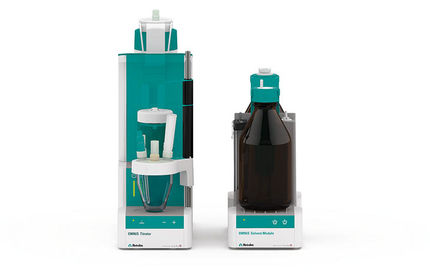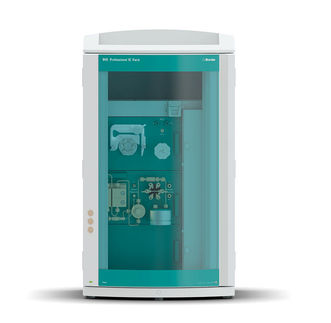To use all functions of this page, please activate cookies in your browser.
my.chemeurope.com
With an accout for my.chemeurope.com you can always see everything at a glance – and you can configure your own website and individual newsletter.
- My watch list
- My saved searches
- My saved topics
- My newsletter
Thin-film depositionThin-film deposition is any technique for depositing a thin film of material onto a substrate or onto previously deposited layers. "Thin" is a relative term, but most deposition techniques allow layer thickness to be controlled within a few tens of nanometers, and some (molecular beam epitaxy) allow single layers of atoms to be deposited at a time. It is useful in the manufacture of optics (for reflective or anti-reflective coatings, for instance), electronics (layers of insulators, semiconductors, and conductors form integrated circuits), packaging (i.e., aluminum-coated PET film), and in contemporary art (see the work of Larry Bell). Similar processes are sometimes used where thickness is not important: for instance, the purification of copper by electroplating, and the deposition of silicon and enriched uranium by a CVD-like process after gas-phase processing. Deposition techniques fall into two broad categories, depending on whether the process is primarily chemical or physical. Product highlight
Chemical depositionHere, a fluid precursor undergoes a chemical change at a solid surface, leaving a solid layer. An everyday example is the formation of soot on a cool object when it is placed inside a flame. Since the fluid surrounds the solid object, deposition happens on every surface, with little regard to direction; thin films from chemical deposition techniques tend to be conformal, rather than directional. Chemical deposition is further categorized by the phase of the precursor:
Physical depositionPhysical deposition uses mechanical or thermodynamic means to produce a thin film of solid. An everyday example is the formation of frost. Since most engineering materials are held together by relatively high energies, and chemical reactions are not used to store these energies, commercial physical deposition systems tend to require a low-pressure vapor environment to function properly; most can be classified as Physical vapor deposition or PVD. The material to be deposited is placed in an energetic, entropic environment, so that particles of material escape its surface. Facing this source is a cooler surface which draws energy from these particles as they arrive, allowing them to form a solid layer. The whole system is kept in a vacuum deposition chamber, to allow the particles to travel as freely as possible. Since particles tend to follow a straight path, films deposited by physical means are commonly directional, rather than conformal. Examples of physical deposition include:
Other deposition processesSome methods fall outside these two categories, relying on a mixture of chemical and physical means:
See also
|
|
| This article is licensed under the GNU Free Documentation License. It uses material from the Wikipedia article "Thin-film_deposition". A list of authors is available in Wikipedia. |
- Shimadzu UK strengthens focus on molecular and atomic spectroscopy with new specialist recruit
- Magnetic with a pinch of hydrogen - Research team develops new idea to improve the properties of ultra-thin materials
- Les scientifiques trouvent une "empreinte" humaine dans l'augmentation de l'ozone dans la haute troposphère - Savoir où chercher ce signal aidera les chercheurs à identifier des sources spécifiques de ce puissant gaz à effet de serre
- Gli scienziati raggiungono una svolta nell'allineamento laser per l'imaging di singole particelle macromolecolari - Visualizzazione di strutture molecolari con dettagli senza precedenti
- PYOSA, S. A. de C. V. - Monterrey, Mexique







